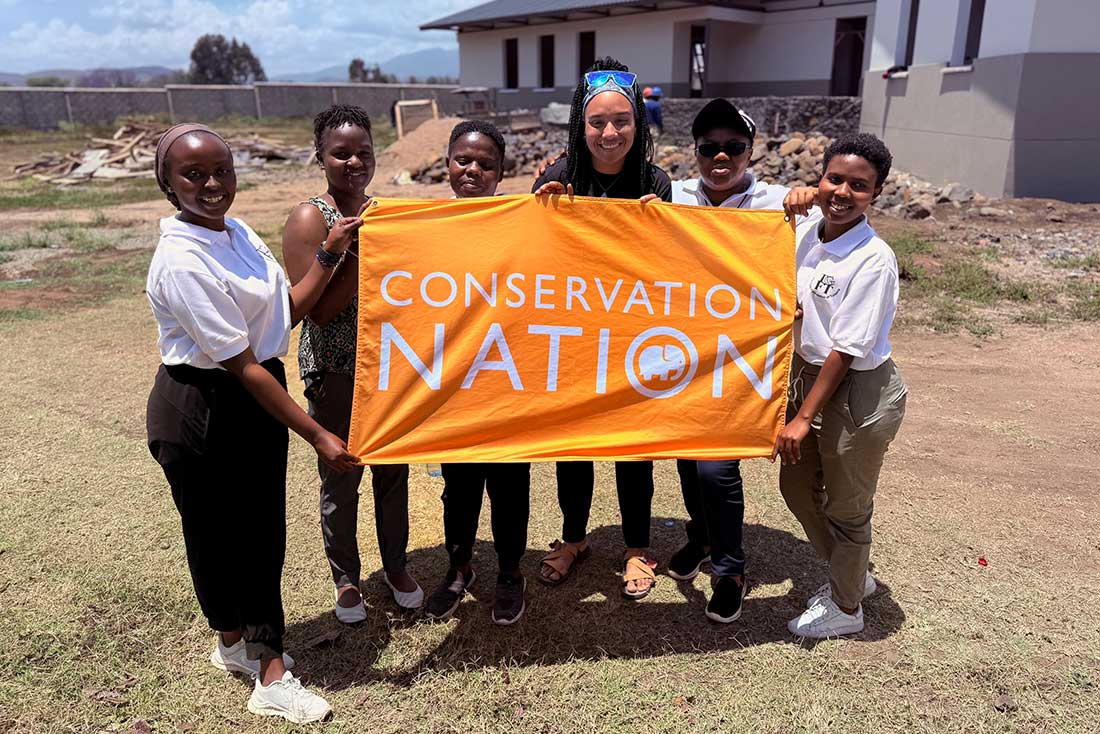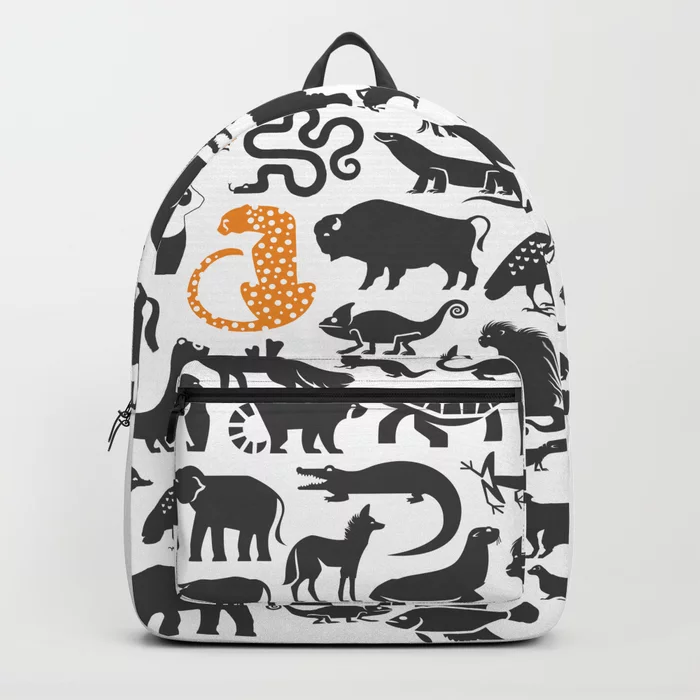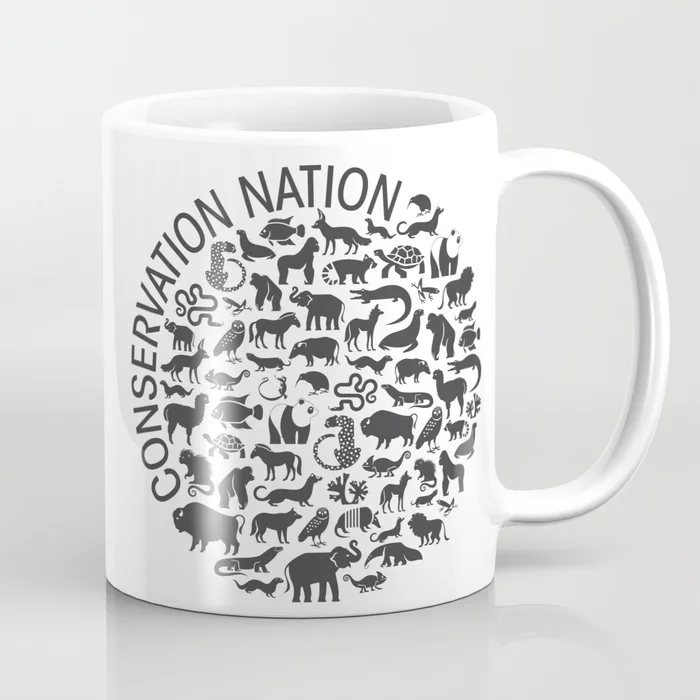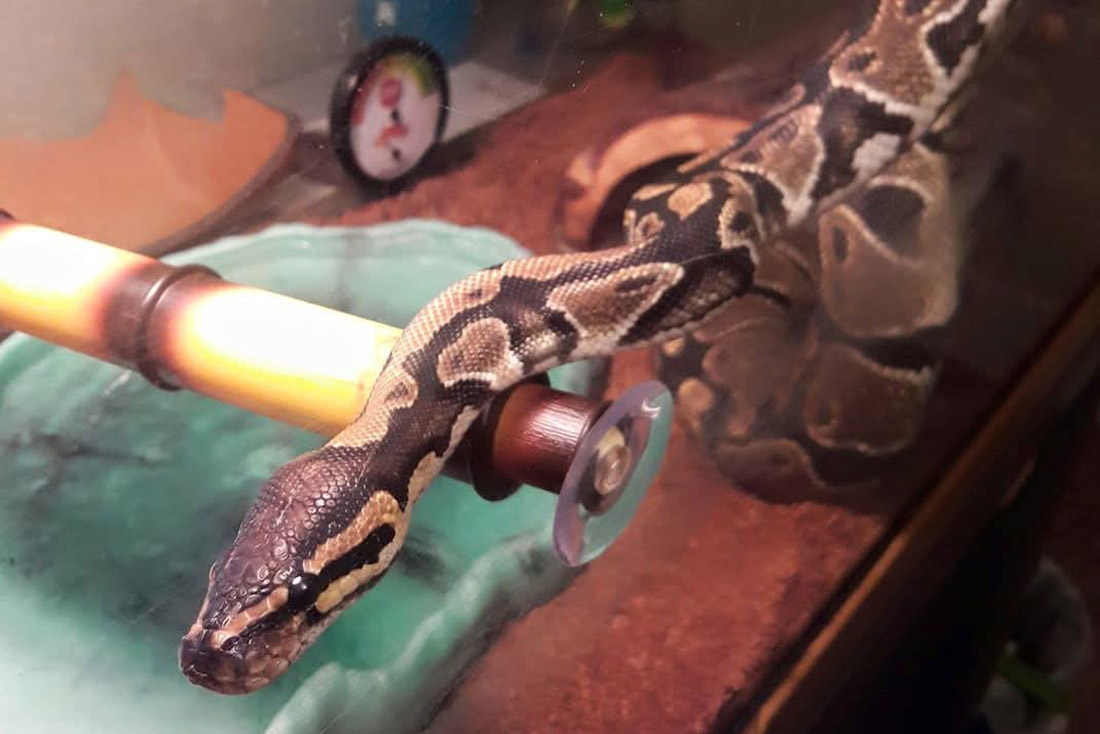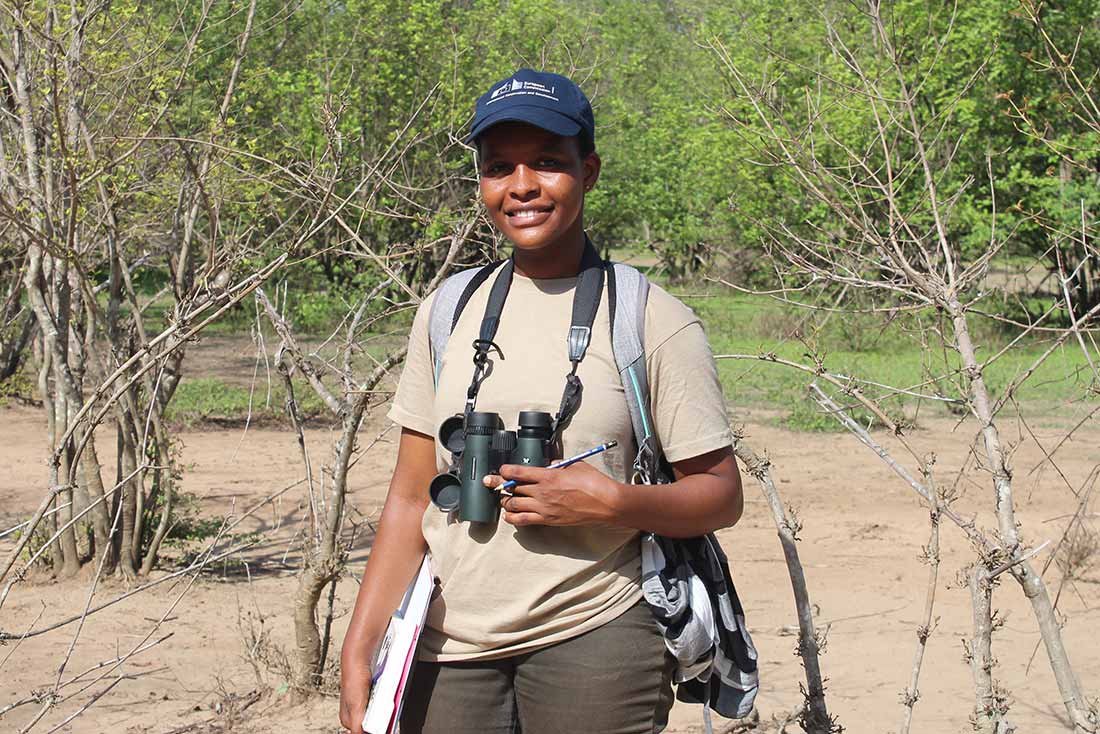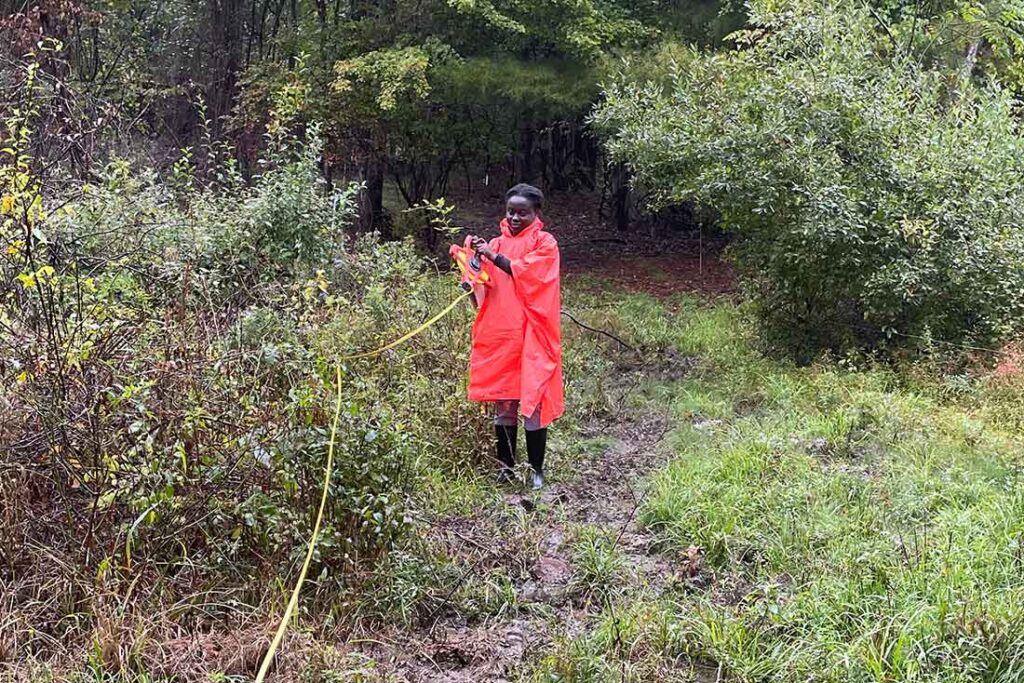Over three amazing years at Smith College, I’ve had the incredible opportunity to combine my passion for conservation and research through the Achieving Excellence in Mathematics, Engineering, and Sciences (AEMES) Scholar program. This prestigious program supports incoming students with exceptional academic and personal qualifications who pursue STEM disciplines such as biology, chemistry, engineering, and mathematics. It is mainly dedicated to helping members of historically underrepresented groups within these fields, including students of color, first-generation college students, and Pell Grant recipients. Being part of this community has been both empowering and inspiring.
My work in the Insect Ecology Lab, under the guidance of the brilliant Professor Mariana Abarca, has been a cornerstone of my academic journey. Our primary focus has been establishing a restoration plot at MacLeish Field Station in Whately, MA. This ambitious project is part of a larger, long-term goal to rehabilitate abandoned pastures and transform them into thriving habitats for Lepidoptera, an order of winged insects that includes butterflies and moths. Such habitats aim to conserve biodiversity and promote ecosystem health, addressing critical conservation challenges.
The restoration plot fulfills two significant objectives. First, it serves as a sanctuary for Lepidoptera populations, providing essential resources such as host plants and nectar sources. Second, it acts as a research site to investigate tri-trophic interactions, exploring the complex relationships among plants, herbivores, and their predators. Our research aims to understand how changes in plant communities affect the abundance and diversity of herbivores and their predators and how these changes, in turn, influence ecosystem processes. Through this work, I’ve honed essential skills in project management, experimental design, and leadership, as well as advanced my expertise in data analysis using R. R is a robust open-source integrated development environment widely used for statistical computing and data visualization, which has been invaluable in processing and interpreting our field data.
During the summer of 2024, I was honored to participate in an educational video produced by Conservation Nation. This opportunity allowed me to showcase my work at MacLeish Field Station and share insights into the research we conduct in the lab. In the video, I also discussed ways individuals can contribute to conserving insects and the environment. This experience was deeply fulfilling, as it allowed me to bridge the gap between scientific research and public engagement, highlighting the importance of collective action in addressing ecological challenges.
I am immensely grateful to Conservation Nation for awarding me the Chrysalis Scholarship, a prestigious award that supports emerging scientists in the field of biodiversity conservation. This scholarship not only provided financial support for my research but also opened doors for professional development opportunities. Thanks to their generosity, I presented my work at the Entomological Society of America’s Annual Meeting in November. Presenting at this conference was a transformative experience that significantly enriched my growth as an aspiring scientist and reinforced my commitment to advancing biodiversity science.
I am excited to continue contributing to conservation and ecological research while deepening my understanding of plant and ecosystem dynamics. Each step forward brings new challenges and opportunities, and I am eager to tackle them with the same passion and determination that have guided me thus far. Here’s to a future dedicated to advancing biodiversity science and fostering a deeper connection between people and the natural world!

